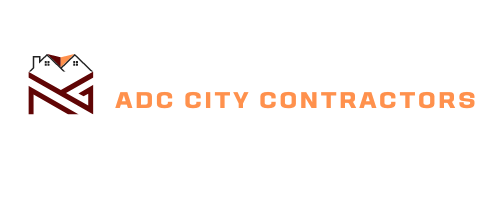In the competitive real estate market of Melbourne, buyers often turn to buyers agents for professional guidance and support throughout the property acquisition process. However, before enlisting their services, it’s crucial to have a clear understanding of buyers agent fees and what you can expect. This article aims to shed light on the role of buyers agents, the breakdown of fees, the fee structure, negotiation tactics, and the impact that these fees can have on your property investment. By the end of this article, you’ll have gained valuable insights into buyers agent fees in Melbourne, empowering you to make informed decisions when engaging their services.
The Role of a Buyers Agent in Property Transactions
A buyers agent Melbourne plays a pivotal role in representing the interests of property buyers. They act as a liaison between buyers and sellers to ensure a smooth transaction process. Their expertise and knowledge of the real estate market can prove invaluable, particularly for those unfamiliar with the intricacies of property acquisition.
Buyers agents assist buyers in various ways, including property searches, property inspections, negotiating purchase contracts, and providing professional advice. Their primary goal is to help buyers secure the best possible property, given their preferences, budget, and desired location.
When it comes to conducting property searches, buyers agents go above and beyond to ensure that they find the perfect match for their clients. They meticulously scour the market, utilizing their extensive networks and industry connections to identify potential properties that align with the buyer’s requirements. This level of dedication and attention to detail sets buyers agents apart, as they leave no stone unturned in their quest to find the ideal property.
Once potential properties have been identified, buyers agents take on the responsibility of attending property inspections on behalf of the buyer. This not only saves the buyer valuable time and effort but also allows the buyers agent to provide a professional assessment of the property’s condition. Armed with their expertise, buyers agents can identify any potential issues or red flags that may not be immediately apparent to the untrained eye.
Key Responsibilities of a Buyers Agent
Buyers agents are entrusted with a range of responsibilities to ensure a successful property acquisition. These responsibilities include:
- Conducting thorough market research to identify potential properties that match the buyer’s requirements.
- Attending property inspections on behalf of the buyer, saving them time and effort.
- Negotiating with sellers or their agents to achieve the most favorable purchase terms.
- Assisting with contract preparation and ensuring all necessary documentation is in order.
- Providing expert advice on property values and market conditions, empowering buyers to make informed decisions.
When it comes to negotiation, buyers agents are skilled professionals who know how to navigate the complexities of the real estate market. They have a deep understanding of market trends and property values, allowing them to negotiate with sellers or their agents to achieve the most favorable purchase terms for their clients. Their expertise in this area can potentially save buyers a significant amount of money, as they are able to secure the best possible deal.
Furthermore, buyers agents provide invaluable guidance throughout the entire transaction process. From contract preparation to ensuring all necessary documentation is in order, they ensure that every step is handled with utmost care and attention to detail. This level of support and expertise offers buyers peace of mind, knowing that they have a trusted professional by their side every step of the way.
How a Buyers Agent Can Benefit You
Engaging a buyers agent can provide numerous benefits for property buyers:
- Access to a wider range of properties through their extensive networks and industry connections.
- Saving time and effort by having a professional handle property searches and inspections.
- Expert negotiation skills to secure the best possible purchase terms, potentially saving buyers money.
- In-depth knowledge of the local market, ensuring buyers make informed decisions.
- Guidance throughout the transaction process, offering peace of mind for buyers.
With their vast networks and industry connections, buyers agents have access to a wider range of properties that may not be readily available to the general public. This gives buyers an advantage, as they have more options to choose from and a higher likelihood of finding their dream property.
By entrusting a buyers agent with the responsibility of handling property searches and inspections, buyers can save valuable time and effort. Instead of spending countless hours researching and visiting properties, buyers can rely on the expertise of their agent to streamline the process and present them with the most suitable options.
When it comes to negotiation, buyers agents possess expert skills that can make all the difference. Their in-depth knowledge of the local market allows them to assess the true value of a property and negotiate with sellers or their agents to secure the best possible purchase terms. This can potentially save buyers a significant amount of money, making the services of a buyers agent a wise investment.
Lastly, buyers agents offer guidance throughout the entire transaction process, providing buyers with peace of mind. They ensure that all necessary documentation is in order and that every step is handled with precision. This level of support and attention to detail allows buyers to navigate the complex world of real estate with confidence and ease.
Breaking Down Buyers Agent Fees in Melbourne
When it comes to navigating the complex world of real estate, buyers agent fees in Melbourne play a crucial role. These fees can vary depending on several factors, including the scope of services, property value, and the level of expertise offered. Understanding the breakdown of these fees is essential to manage your budget effectively and make informed decisions.
Let’s delve deeper into the common types of fees charged by buyers agents. This knowledge will empower you to make informed decisions and ensure that you are getting the most value for your money.

Common Types of Fees Charged by Buyers Agents
Buyers agents employ various fee structures to cover their services. Here are some of the most common types of fees you may encounter:
- Engagement Fee: This upfront fee covers the initial costs associated with engaging a buyers agent. It includes activities such as research, consultations, and the development of a tailored strategy to meet your specific needs.
- Success Fee: This fee is typically a percentage of the property purchase price and is paid upon successful acquisition. It serves as an incentive for the buyers agent to negotiate the best possible deal on your behalf.
- Inspection Fee: Some buyers agents may charge additional fees for attending property inspections on your behalf. This ensures that you have an expert eye assessing the property’s condition and identifying any potential issues.
- Admin Fee: This fee covers the administrative costs associated with managing the property acquisition process. It includes tasks such as paperwork, coordination with other professionals involved in the transaction, and ensuring a smooth closing process.
Factors Influencing the Cost of Buyers Agent Fees
Now that we have explored the common types of fees, let’s examine the factors that can influence the overall cost of buyers agent fees:
- Property Value: Buyers agents often charge a percentage fee based on the purchase price. Therefore, it follows that higher-priced properties will incur higher fees. This fee structure aligns the interests of the buyers agent with your goal of finding the best property within your budget.
- Scope of Services: The level of assistance provided by buyers agents can affect the overall fees. Some buyers agents offer comprehensive services, including property searches, inspections, and even negotiation strategies. Others may offer more limited assistance, focusing solely on specific aspects of the buying process. The breadth and depth of services you require will impact the fees charged.
- Experience and Expertise: Buyers agents with extensive industry experience and a proven track record may command higher fees due to their expertise and reputation. Their knowledge of the market, negotiation skills, and ability to identify hidden gems can be invaluable in securing the right property at the right price.
By considering these factors and understanding the breakdown of buyers agent fees in Melbourne, you can make informed decisions that align with your budget and goals. Remember, the fees charged by buyers agents are an investment in your peace of mind and the successful acquisition of your dream property.
Deciphering the Fee Structure
Understanding the fee structure offered by buyers agents is crucial to assess the value provided and evaluate its suitability for your needs.
Fixed Fee vs Percentage Fee
Buyers agents may charge either a fixed fee or a percentage fee. A fixed fee offers transparency, as the amount remains constant regardless of the property’s purchase price. On the other hand, a percentage fee, while potentially more variable, allows buyers agents to align their interests with yours, as their fees are tied to the success of the transaction.
Understanding the Terms of the Agreement
Before engaging a buyers agent, it’s imperative to carefully review and comprehend the terms of the agreement. Pay close attention to factors such as the duration of the agreement, any exclusivity clauses, and any additional fees that may apply throughout the process.
Negotiating Buyers Agent Fees
While buyers agent fees are typically set based on the provided fee structure, there may be room for negotiation depending on individual circumstances.
Tips for Negotiating a Fair Fee
When negotiating buyers agent fees, consider the following tips:
- Research and compare fees offered by multiple buyers agents to gain insight into the market rates.
- Highlight your requirements and expectations to demonstrate the value you seek from their services.
- Consider bundling services or requesting a discount for multiple property acquisitions.
Red Flags to Watch Out for When Negotiating
While negotiation can be beneficial, it’s essential to be mindful of potential red flags during the process:
- Excessive fee reductions that may indicate a lack of expertise or compromised services.
- Opaque fee structures or ambiguous terms that may lead to additional hidden costs.
- Buyers agents who are hesitant to explain or justify their proposed fees.

The Impact of Buyers Agent Fees on Your Property Investment
Considering the financial implications of buyers agent fees is crucial, as they can affect your overall property investment strategy.
How Fees Can Affect Your Budget
Buyers agent fees need to be factored into your budget alongside other property-related expenses, such as stamp duty, legal fees, and ongoing maintenance costs. Failing to account for these fees may result in financial strain or unexpected surprises later on.
Long-Term Financial Implications of Buyers Agent Fees
While buyers agent fees may seem like an additional expense, their long-term benefits and potential cost savings cannot be overlooked. By securing a property that aligns with your requirements and negotiating favorable purchase terms, buyers agents can potentially save you money in the long run.
In conclusion, understanding buyers agent fees in Melbourne is essential when considering their services. By comprehending the role of buyers agents, the breakdown of fees, the fee structure, negotiation tactics, and the potential impact on your property investment, you can make informed decisions and maximize the value received from their services. Remember to conduct thorough research, analyze the terms of the agreement, and negotiate a fair fee that aligns with your budget and expectations. With this knowledge, you’ll navigate the real estate market with confidence and achieve a successful property acquisition in Melbourne.
Related: The benefits of hiring a buyers advocate in Melbourne.

